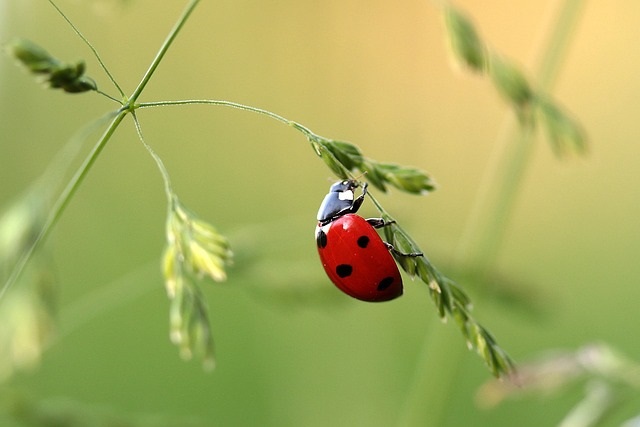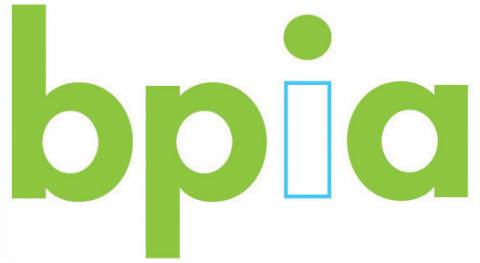Agrochemicals
Biologicals are a natural fit 21st April 2019
By Biological Products Industry Alliance (BPIA)
Experts at the Biological Products Industry Alliance (BPIA) outline the current status of biological products in agriculture, and
Experts at the Biological Products Industry Alliance (BPIA) outline the current status of biological products in agriculture, and how they are being used to protect and enhance crops while presenting little or no risk to human health and the natural environment.

Many sources, including the United Nations, are projecting the world’s population to surpass nine billion people by the year 2050. This is expected to drive food demand to unprecedented levels with the potential for food scarcity in many areas of the globe. In addition to the population issue, there is a growing recognition that food production needs to become more sustainable with less of an impact on the environment and fewer potential human health consequences. This combination of complex challenges presents a very real problem. Biological products are uniquely positioned to be part of the solution by protecting crops from pest threats as well as increasing crop quality and yield while presenting little or no risk to human health and the natural environment.
Biological products include both biopesticides and biostimulants. Biopesticides are biochemicals, plant extracts, semiochemicals, microbials, bacteria, fungi, viruses, and microorganisms such as predatory insects, mites and beneficial nematodes. Biostimulants currently encompass a diverse range of products including amino acids, microbials, organic acids and seaweed extracts.
“The global biopesticide market was valued at $3.8 billion in 2017 and is growing at a consolidated annual growth rate (CAGR) in excess of 16%,” according to Manel Cervera Comabella, International Business Director with DunhamTrimmer. “The global biostimulant market was valued at $2.2 billion in 2017 with a CAGR of 13%. By 2025, the combined global value of the biopesticides and biostimulants is projected to exceed $15 billion.”
Microbials make up approximately 55% of the biopesticides market with bacterial based products being the dominant type. Biochemicals represent about 35% of the biopesticides market with microorganisms being the balance. Microbials are growing faster with a CAGR in excess of 17%. In the biostimulant sector, seaweed extracts are the largest (40%) followed by amino acids (30%), then organic acids (20%) with the balance being microbials. Microbials are also growing fastest in biostimulants with a CAGR of 15%.
“The United States and Europe represent 2/3 of the global biological products market with 32% of the market each,” said Comabella. “Latin America is the fastest growing region for biopesticides, expected to become 20% of the market by 2025. This is because the climate in Latin America is particularly well suited for the use of biological products.”
There are a variety of target crops and uses for biological products, ranging from pre-harvest pest control on strawberries to post-harvest sprout control on potatoes. Biological products can help the crop naturally fend off threats of insects and disease. Biological crop enhancement products, sometimes referred to as plant growth regulators, utilize naturally occurring bacteria to increase yield and marketability of crops. Plant biostimulants contain substances or micro-organisms to stimulate natural processes to enhance and benefit nutrient uptake, nutrient efficiency, tolerance to abiotic stress, and crop quality. Biological larvicides and adulticides can even protect public health by controlling mosquito populations that can carry diseases such as Dengue, Zika and West Nile Virus.
In addition to increased crop quality and yield, biological products offer a variety of benefits.
Biological products can help maintain beneficial insects including natural predator populations in the field. Most biological controls have short restricted entry and pre-harvest intervals allowing workers to get back into the fields after product application without any health risk. Plant growth regulators can aid in timing the crop harvest and in managing the ripening process.
When used as components of Integrated Pest Management (IPM) programs, combining biological and synthetic practices, biologicals can greatly aid in resistance management. Pest resistance to conventional chemical pesticides is a significant grower and industry concern. Scientific research has repeatedly demonstrated that continuous use of the same class of pesticides, especially those reliant on a single mode of action, will result in the emergence of a pest population resistant to those products.
Populations of insect pests, plant pathogens and weeds all have the ability to develop resistance quickly, even to different types of functionally similar chemistries. This phenomenon is called cross-resistance and is caused by multi-chemistry detoxification mechanisms present in many pest populations. As new classes of low-impact chemistries continue to be introduced to commercial growers and educators, the challenge of resistance management must be met proactively through thoughtful use of diverse product choices for season-long pest control programs.
Biopesticides have long been used in combination with synthetic chemistries to provide the basis for excellent control programs that effectively manage resistance. “Biopesticides typically have modes of action that are unique from synthetic pesticides and do not rely on a single target site for efficacy,” said Jennifer Lilly, Biologicals Product Registration Manager for BASF. “The naturally occurring soil bacterium Bacillus subtilis, for example, has multiple active components including antagonistic properties affecting pathogens and positive effects on the plant itself. Properly used, biocontrols have the potential to extend the effective field life of all products by curtailing the development of resistant pest populations.”
Currently, biological products represent approximately just 5% of the total global crop protection market in agriculture. That means conventional products still represent about 95% of the total global crop protection market, but the use of biological products increases every year as more biological products become available and growers become more familiar with them and their unique benefits. New biological products can take three to five years from discovery to commercial use and can cost as much as 10 to 15 million dollars to develop. By contrast, new synthetic pesticides can take twelve to eighteen years from discovery to commercial use and can cost as much as 100 to 300 million dollars to develop.
Thus far, biological products have found their greatest acceptance with fruit and vegetable growers where biological product use represents about 17% of those markets and continues to increase annually. Nevertheless, biological products are finding increased use and acceptance in all aspects of commercial agriculture as well as in forestry, greenhouses, home gardens, horticulture, ornamentals, public health and turf markets.
“The biggest challenges for biological products continue to be awareness and understanding of what these products are, how they work, and their benefits,” said Karen Warkentien, Director of Regulatory Affairs for Certis, USA LLC. “There are still misperceptions regarding the effectiveness of biological products. However, there are now years of data for well-established products that can demonstrate their efficacy without question.”
There is also a misconception that biological products cost more per acre to use than conventional products. “That is not accurate when you factor in the dollar value of the unique benefits of biological products such as residue management, worker safety, exemptions from tolerances, and the very real cost savings that result from these benefits that are not found with conventional products,” said Warkentien.
Despite any challenges, around $2 billion is spent on biostimulants each year around the world. By 2021, the biostimulant market is expected to reach $3 Billion per year. The market for biopesticides is more established and larger than biostimulants and has already reached $3 Billion annually. The biopesticides market is predicted to reach $5 Billion by the year 2021. Clearly, the market for biological products will continue to grow as there is greater appreciation for the ability of biopesticides and biostimulants to help feed a growing global population in a truly sustainable way.

This article was written by the Biological Products Industry Alliance (BPIA). BPIA is the premier organization dedicated to fostering the use of biological technology including biopesticides and biostimulants. BPIA is a rapidly growing association with over 130 member companies ranging from small, innovative sole proprietors to large, international companies. BPIA members provide solutions that benefit growers, consumers, and the environment. For more information visit www.bpia.org



